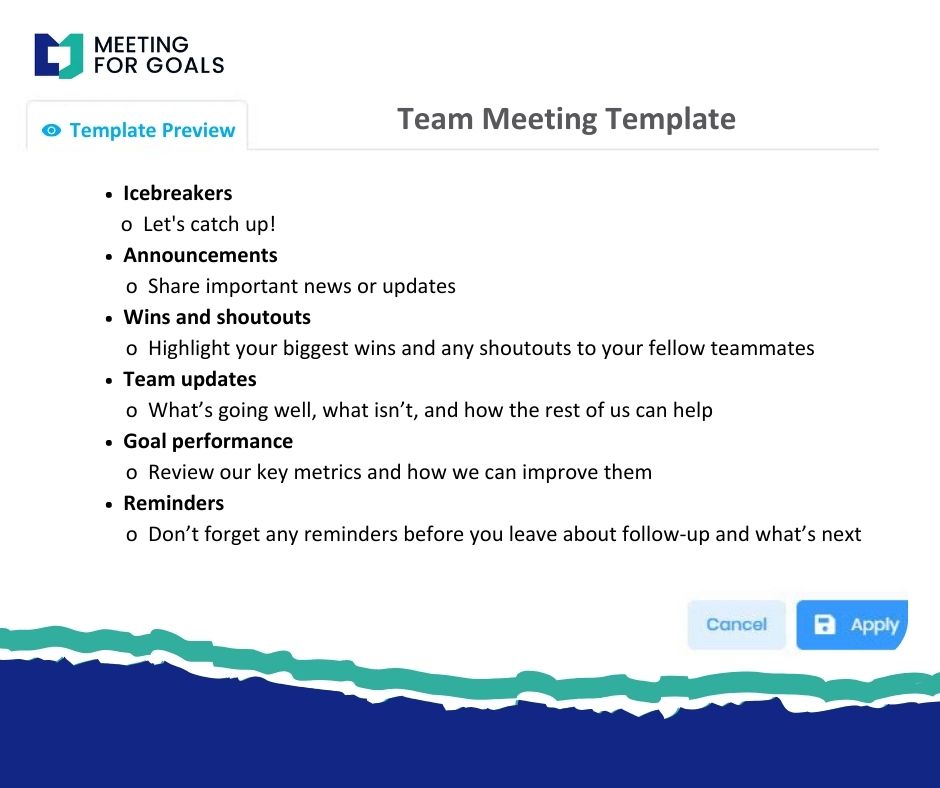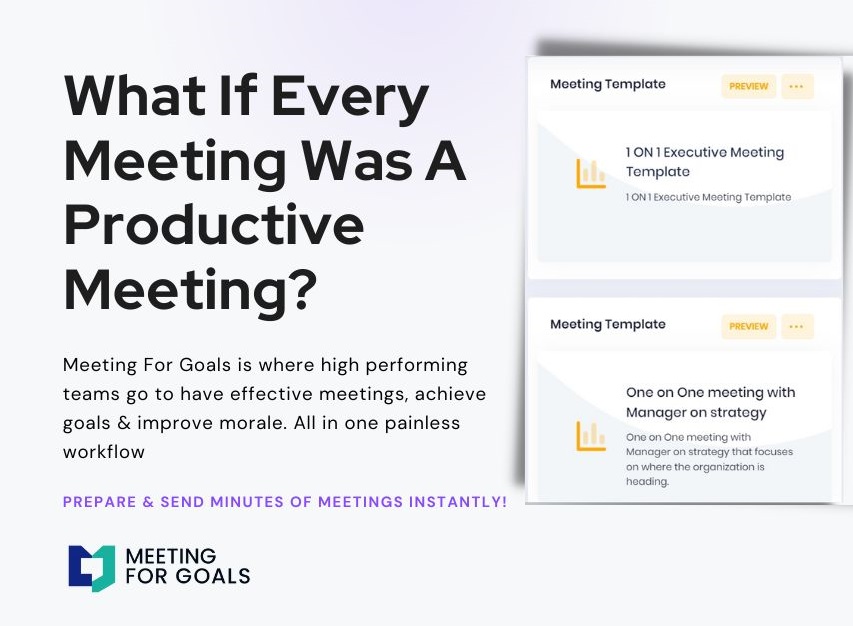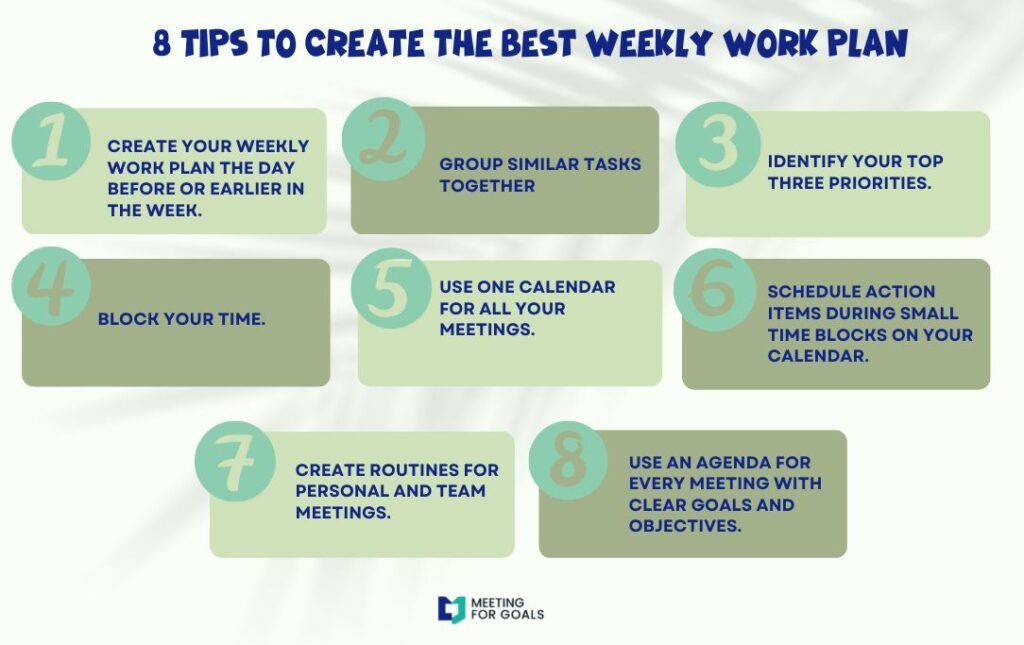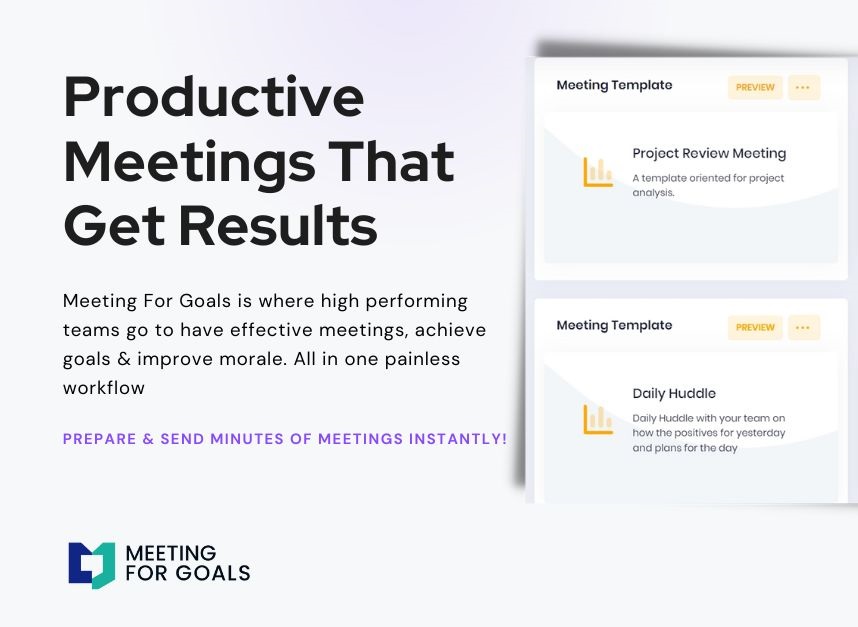The Ultimate Guide to Running a Productive Kickoff Meeting
Kickoff meetings are more than just a formal start to a project—they’re the foundation for success. Whether you’re launching a new product, onboarding a client, or initiating a cross-functional initiative, the kickoff meeting sets the tone, defines the direction, and aligns your team. For high-performing teams in companies with 40–70 employees, especially those led by results-driven executives, a well-executed kickoff meeting can be the difference between seamless execution and chaotic misalignment.
If you’re looking to improve your kickoff meetings and overall team alignment, check out our free meeting templates to get started: https://meetingforgoals.com/meeting_templates.
In this blog post, we’ll walk you through the essential components of an effective kickoff meeting. We will also show how Meeting For Goals can help you streamline the process, drive accountability, and make every meeting count.
I. Introduction
In today’s fast-paced business environment, meetings can either be your biggest asset—or your biggest time sink. A kickoff meeting, when done right, becomes the launchpad for project success. It sets expectations, aligns stakeholders, and creates momentum.
Kickoff meetings are typically the first official gathering of all stakeholders for a new project. They’re your chance to clarify the project’s purpose, scope, deliverables, and timelines. For mid-sized companies, especially those led by C-suite executives, directors, and VPs, these meetings are essential. They make sure everyone is pulling in the same direction from day one.
That’s where Meeting For Goals comes in. It is a meeting management platform that helps high-performing teams run shorter, more focused, and more effective meetings. It ensures alignment with company goals, boosts accountability, and saves your team valuable time. Whether you’re launching a product or revamping internal systems, our platform ensures every meeting drives real results.
In this guide, we’ll break down six essential elements of a successful kickoff meeting. You’ll learn how to set clear objectives, gather the right team, build a strong agenda, and foster collaboration. Let’s dive in.
2 Minute Video
Watch a 2 minute demo of our meeting management software in action.
II. Defining the Objective of the Kickoff Meeting
Every great kickoff meeting starts with one thing: a clear objective. Without a defined purpose, meetings can drift off course. This leaves participants confused and disengaged.
So what’s the true goal of a kickoff meeting? At its core, it’s about alignment. You want everyone involved to understand the project’s purpose, scope, deliverables, timeline, and individual responsibilities. When these elements are clear from the start, you reduce the risk of miscommunication, delays, and scope creep.
Common objectives include:
- Explaining why the project matters and how it supports company goals.
- Defining what’s in scope—and what’s not.
- Outlining key milestones and deadlines.
- Introducing team members and their roles.
- Identifying risks and how to manage them.
- Establishing communication norms and meeting cadences.
But knowing your objectives isn’t enough—you need to communicate them clearly. With Meeting For Goals, you can set meeting objectives right in your agenda. Your team sees the goals before the meeting begins, so everyone walks in prepared. You can also link meeting objectives to broader company goals for added transparency.
Need your team to review a project brief before the meeting? Assign that task through the platform. Want to know if everyone’s on the same page? Meeting For Goals tracks whether objectives were met. This gives you insights into how to improve future meetings.
In short, a kickoff meeting without a goal is like a GPS without a destination. Define your objective, communicate it clearly, and use smart tools to keep everyone aligned from the start.
Adding an Agenda
How to add an agenda instantly on Meeting For Goals.
III. Assembling the Right Team
You can have the best agenda and tools, but if the wrong people are in the room, your kickoff meeting won’t deliver results. So, who should you invite?
The ideal kickoff team includes a mix of strategic thinkers and hands-on executors:
- Project sponsors or executives who provide direction.
- Project managers who will lead the day-to-day execution.
- Department heads or team leads who oversee key contributions.
- Subject matter experts who bring deep knowledge.
- Stakeholders from affected departments.
Avoid over-inviting. Too many people can lead to confusion and slow down decision-making. Instead, focus on quality over quantity—invite only those who will actively contribute.
Once your team is set, clarify everyone’s role. Consider the following:
- Who’s making decisions?
- Who’s responsible for deliverables?
- Who’s there to provide input?
Meeting For Goals makes this easy. You can tag attendees as decision-makers, contributors, or observers. This keeps everyone on the same page. Plus, the platform integrates with your calendar to send invites automatically. This saves time and avoids scheduling headaches.
You’ll also get visibility into who’s accepted the invite, reviewed the agenda, and completed any pre-meeting tasks. This level of preparation ensures your kickoff meeting starts strong.
In essence, assembling the right team is about strategic inclusion. With the right mix of people—and Meeting For Goals managing the details—your kickoff meeting becomes a launchpad for success.
IV. Creating an Agenda that Drives Discussion
A meeting without an agenda is like a road trip without a map—you might get somewhere, but it won’t be where you intended.
A strong agenda keeps your kickoff meeting focused, productive, and on time. It also encourages participation and ensures that nothing important falls through the cracks.
Here’s what a solid kickoff agenda should include:
- Welcome and Introductions – Break the ice and set the tone.
- Project Overview – Clarify the “why” behind the project.
- Scope and Deliverables – Define what’s included (and what’s not).
- Roles and Responsibilities – Assign ownership for key tasks.
- Timeline and Milestones – Highlight critical deadlines.
- Communication Plan – Set expectations for updates and check-ins.
- Q&A and Discussion – Open the floor for concerns and ideas.
- Next Steps – Confirm action items and follow-up meetings.
With Meeting For Goals, building this agenda is a breeze. Use our drag-and-drop interface to add agenda items, assign time slots, and link each section to specific goals. You can also attach key documents like project briefs or timelines, so everything is in one place.
Once your agenda is ready, share it with attendees in advance. This gives everyone time to prepare, which leads to better discussions and faster decisions.
During the meeting, track your progress through the agenda, take notes, and assign action items—all in real time. Afterward, Meeting For Goals generates a summary with all the key takeaways and tasks, so nothing gets lost.
Want to see what a great agenda looks like? Browse our free meeting templates here: https://meetingforgoals.com/meeting_templates.
V. Fostering a Collaborative Environment
A kickoff meeting isn’t a lecture—it’s a conversation. To get the best ideas and buy-in from your team, you need to create a space where everyone feels comfortable contributing.
Start by setting the tone. As the meeting leader, be open, inclusive, and encouraging. Ask for input, listen actively, and recognize contributions.
Here are a few techniques to spark engagement:
- Round-robin sharing – Give everyone a chance to speak.
- Breakout groups – For larger meetings, divide into smaller groups for deeper discussion.
- Live polls – Use tools to gather instant feedback.
Meeting For Goals is designed to support collaboration. Attendees can add comments, questions, or notes directly into the agenda—even during the meeting. This is especially helpful for remote or quieter team members who may not speak up but still have valuable input.
Our platform also integrates with popular video conferencing tools. This means your team can collaborate in real time, whether they’re in the office or across the globe.
Importantly, everything discussed is captured and documented. No more “he said, she said” or forgotten action items. This transparency builds trust and keeps everyone accountable.
When people feel heard and see their input lead to real action, they’re more engaged. And engaged teams deliver better results.
For more tips on fostering collaboration, check out this insightful article from Harvard Business Review: https://hbr.org/2016/06/collaborative-overload.
VI. Conclusion
A successful kickoff meeting is more than just a calendar event—it’s a strategic tool that sets your project up for success. It aligns your team, clarifies goals, encourages collaboration, and builds momentum.
Let’s recap the key takeaways:
- Start with clear, actionable objectives.
- Invite the right mix of decision-makers and doers.
- Build a structured agenda that drives discussion.
- Create a collaborative environment where everyone feels heard.
- Use Meeting For Goals to streamline and enhance the entire process.
At Meeting For Goals, we believe every meeting should move your team forward—not hold it back. Our platform is built for teams who want to save time, improve accountability, and make meetings matter.
Ready to take your kickoff meetings to the next level? Sign up today and see the difference: https://app.meetingforgoals.com/TenantRegistration/Register.
If you’re looking for more ways to optimize your team’s productivity, explore our website for helpful resources and tools: https://meetingforgoals.com.
Want to learn more about why productive meetings matter? Check out this article by McKinsey on how organizations can unlock more value through better collaboration: https://www.mckinsey.com/capabilities/people-and-organizational-performance/our-insights/the-organization-blog/why-meetings-go-wrong-and-how-to-fix-them.
Let’s redefine the future of work—one meeting at a time.




